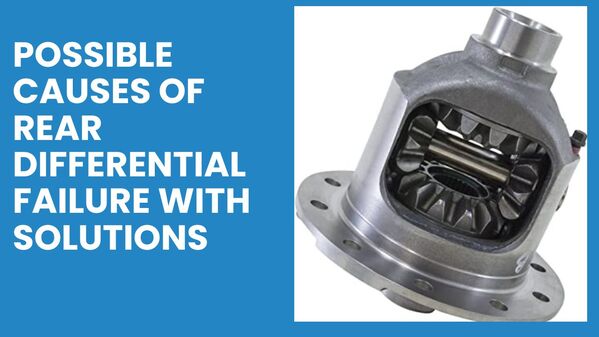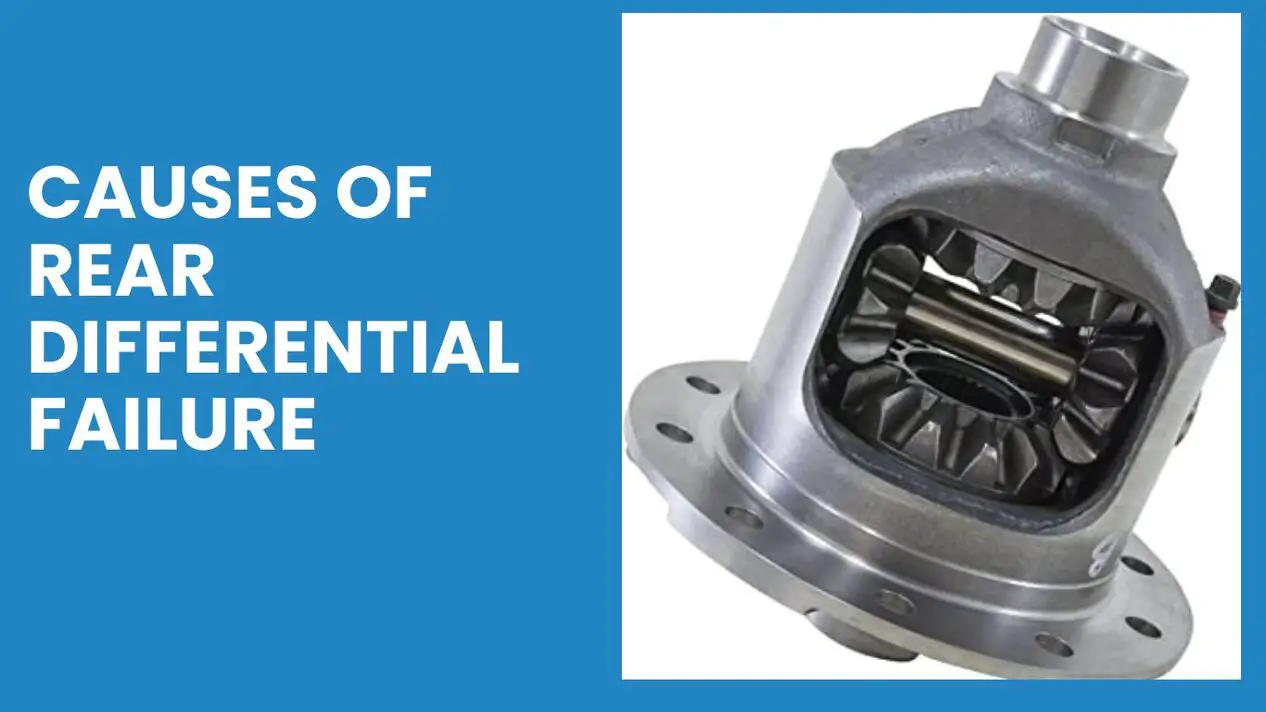Rear differential failure often stems from inadequate maintenance. Common causes include neglected oil changes and worn components.
Properly functioning differentials are vital for vehicle handling and stability. Failure can lead to handling difficulties and increased tire wear. Regular maintenance, like oil changes and inspections, prevents these issues, ensuring vehicle safety and longevity.
Related: Can A Bad Differential Cause Power Loss: An In-Depth Analysis
Possible Causes Of Rear Differential Failure With Solutions

Now, we limit our discussion to discussing the common yet most happening causes of rear differential failure. Also, you’ll get the troubleshooting idea to resolve the issue immediately.
Using Wrong Lubricants
Proper lubrication is necessary to keep the differential workable. But if you use the wrong lubricants that aren’t recommended by the manufacturer, the differential starts to malfunction. Specific fluids for specific differential are required to achieve better performance and wheel balancing.
Possible Solutions: Use the recommended fluids or lubricants. Read the owner’s manual carefully to find specific lubricants. Proper lubricants to deliver the highest performance to operate genuinely while reducing energy costs. Also, it improves the CO2 balance and reduces harmful emissions by decreasing gear’s and bearing’s friction.
Lubricant Deficiency
Each differential needs enough lubricant to work. Say you used exact lubricants that fulfill differential demand. But you may not put the lubricants when required. Low lubricant levels or changing the lubricant after a long contribute to damage to the rear differential.
The way adequate lubricants get into the differential and keep the gears turning perfectly and smoothly, lack of lubrication can’t. Without adequate fluids, the rear differential can’t work smoothly.
Also, if water goes through the vent or seals due to driving on the high water surface and mixes up with the lubricants, it will cause the gear and bearing surface to get rusty.
Possible Solution: Always try to concentrate on the fluid level. When you notice the lubricant at a minimal level, insert the lubricants. This way you can achieve optimal performance.
Poor Maintenance And Off-Roading Driving
The differential is a mechanical component that needs to be treated well and organized way. But unfortunately, many car owners ignore this without concern. As a result, it gets worse day by day without letting you know or suddenly.
Alarmingly, if you leave it without maintenance for a long, it could be damaged or fail early and repeatedly. Driving your car regularly without checking the mechanical part causes significant and long-lasting damage which puts your vehicle and you at threat.
This is also true that poor maintenance is not only the problem for this damage. It happens due to excessive driving sessions.
Possible Solution: The only thing you need to do is regular maintenance. Also, always focus on the lubricant you use and the lubricant quantity. Make your driving safe and try to avoid relentless driving and off-road as much as you can.
Transmission Fault
If the transmission loses its individuality or gets damaged, the differential will go bad. Now, the transmission fails due to many reasons and causes the gear not to shift genuinely. Transmission and differential are considered to complement each other.
So when the differential performs less efficiently, metal-to-metal friction increases which causes the gear to be weak. Consequently, component failure happens and finally, transmission problems arise. Low transmission fluid causes the rear differential to fail.
Possible Solution: Here you need to change the old transmission fluid or use genuine fluids that demand your vehicle. Use the fluid which is recommended by the owner’s manual,
Severe Accident
Attempting accidents somehow cause the differential to fail. If you notice any symptoms arise related to the broken differential, try to remember you faced an accident. That accident may cause significant damage to the differential and you didn’t notice.
Possible Solution: Inspect and ensure the cause. If you see there is a broken differential, replace it hurriedly. You can get assistance from a professional and seek professional help to get the replacement task done safely and quickly.
Damaged Differential Bearings
Another common yet one of the most intriguing causes of rear differential failure is worn-out differential bearings. Loose or broken or burned rings and pinions can cause significant damage as well. However, if there is an issue in the bearing, the oil will quickly leak.
When the case gets worse and doesn’t take the necessary steps, it will cause bearings to be blocked. As a result, the tires stop spinning at the required speeds which in turn causes the transmission to go bad.
Broken Gears
Keeping gear aligned is crucial to keep the momentum right. As soon as the gears slip out from the palace or break, it will affect mechanical components like the rear differential. As a result, you hear a howling noise during acceleration. Broken gears can’t make any contact with each other which lets the differential away to distribute power.
Possible solution: Inspect the gears deeply and then, replace the entire gears or fix the issue soon. If you can’t handle the task, get help from a professional.
Reckless Driving
Last but not least. Many crazy drivers or car owners attempt to drive ruthlessly which in turn causes significant damage to the mechanical parts. They don’t maintain off-road, on-road, or highway. As a result, the differential takes more pressure.
In the meantime, you’ll notice instability and poor driving experience on the curb road since a worn-out differential can’t balance the wheel spinning right.
Possible Solution: Drive your car with maximum safety and take safety measures before starting to drive. Avoid harsh driving on off-roading surfaces.
In addition to these causes, seized U-joints will be the culprit for rear differential failure.
Symptoms Of Damaged Rear Differential You Should Know
So how do you know your rear differential needs care? Here are the possible signs that tell you.
Difficult in Handling
Difficulty in handling due to a damaged rear differential can manifest as challenges during turns, the vehicle pulling to one side, and unpredictable steering response. These issues arise from uneven power distribution to the wheels, often caused by worn gears or bearings, necessitating prompt professional inspection and repair.
Increased Tire Wear
Increased tire wear from a damaged rear differential results from uneven distribution of power to the wheels, causing irregular tire rotation and abnormal wear patterns. This symptom, often overlooked, can lead to premature tire replacement and indicates the need for an immediate check of the differential system.
Rapid Vibration and Noise
The first sign that you encounter for a bad differential is unwanted noise. There are some noises, for instance, humming, rumbling, whining, or grinding noises that will be heard after the differential gets damaged.
Differential Fluid Leakage
The next common yet complex sign is a fluid leak. You’ll notice the fluid leak excessively and it affects fuel economy.
In addition to these, experiencing poor handling, uneven or irregular tire wear, losing traction, differential overheating, etc. are the most typical symptoms of a bad rear differential.
Conclusion
The rear differential transmits the power and speed to both wheels. Thus, the wheel can rotate at different speeds during cornering or turning. Over time, however, this mechanical component becomes damaged and ceases to function efficiently. As a result, you need to repair or take the necessary steps to solve this issue.
But before that, it’s also essential to know the exact causes of rear differential failure. This guide covered everything like causes, symptoms, and possible troubleshooting directions to treat failed rear differential.
